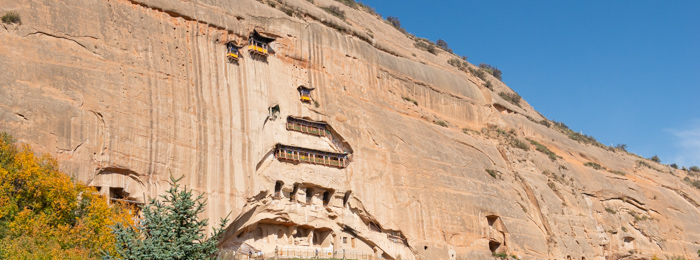Day 1. Arrive Zhangye and transfer to hotel. If time allows, we will visit Dafosi Lying Buddha Temple.
Our guide and vehicle will pick you up from Zhangye Ganzhou Airport and then drive half hour to the hotel. Zhangye is not only one of the most important strategic towns but also the granary on the silk road. The population of Zhangye is 1.2 million and became the politic and economic center of this region. If arrive Zhangye any time before 3pm, we can visit Dafosi Lying Buddha Temple. Dafosi Temple is a large complex in the center of the town. The main building is the Lying Buddha Temple which hosts China’s largest indoor Buddha Statue which is 35m long and 7.5m tall. The murals on the wall of this temple is some of the well preserved ones on the silk road. After visit the temple, then we will call it a day by having a nice dinner in the old street.
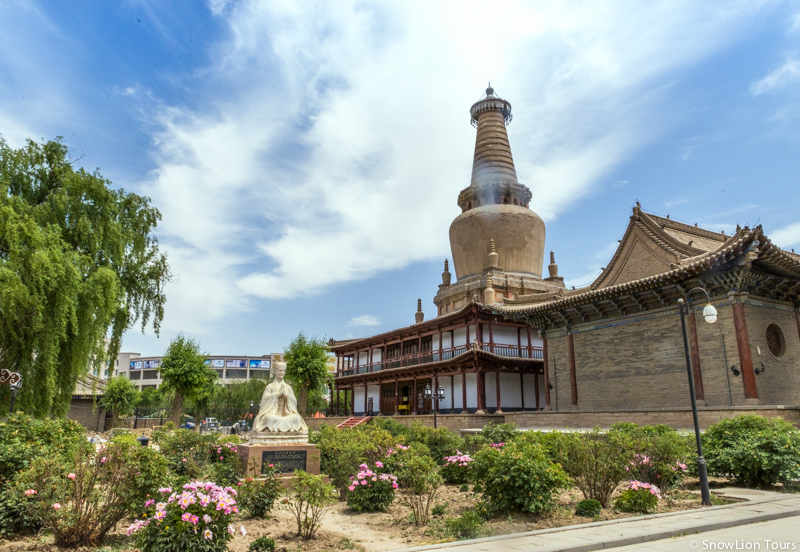
Dafo Si in Zhangye, it is home to a giant lying buddha.
Day 2. Zhangye – Matisi – Rainbow Mountains – Zhangye
Drive about 80km to from Zhangye to the foot of Qilian Mountain, you will see reach Matisi which lies in the middle of Hexi Corridor. Grottoes of the Matisi Temple Complex, which consists of various Temples and the Caves with their Statue of Deities and Murals. The narrowed stone carved paths are a little bit tricky but a worthwhile to climbing up.
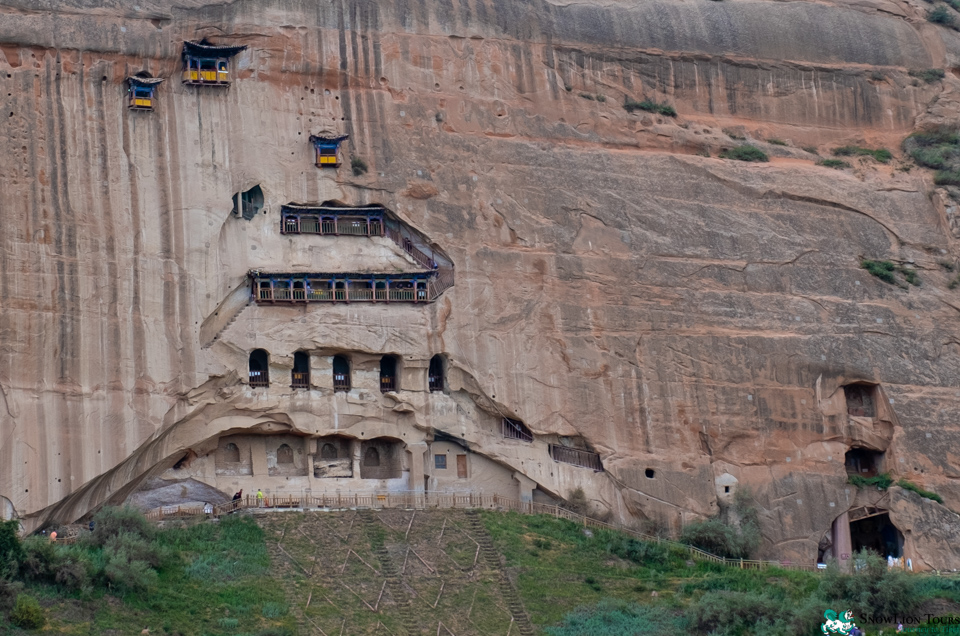
Masti Temple
Afterwards, We will drive to Rainbow Mountains or Qicai Danxia Geopark. This is a large park consists of many different colored and shaped mountains. The park bus will stop in 4 places once you enter the park and each stop point has wooden trails where you can walk up to the hills to see the unique landscape of this park. After our touring in this park, we will drive back to Zhangye.
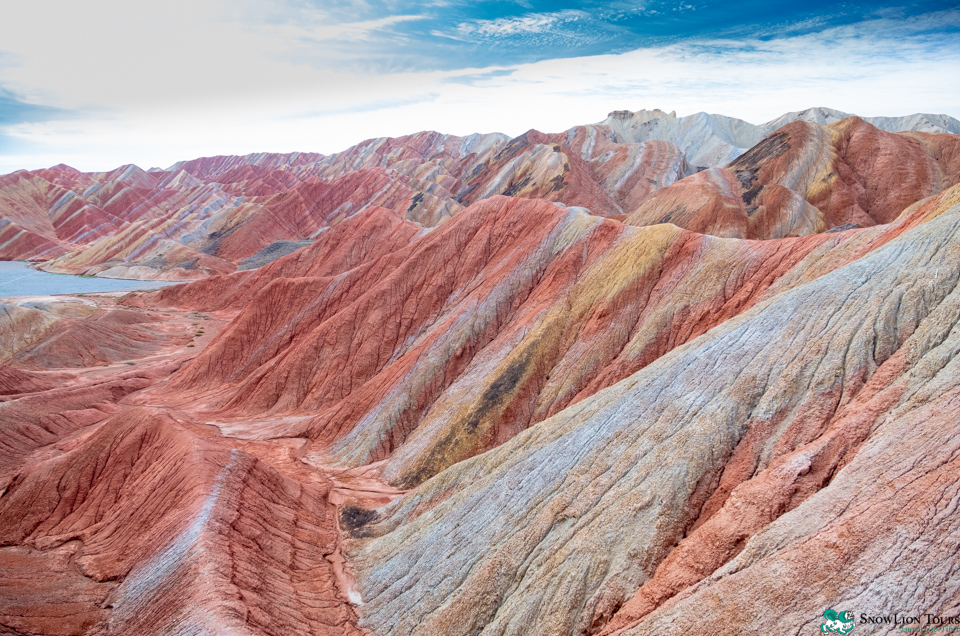
Zhangye Rainbow Mountains in Gansu
Day 3: Zhangye – Jiayuguan
Today, we will drive 250km to the west to Jiayuguan. Once we arrive Jiayuguan, we will visit Jayuguan Pass or Jiayuguan Fortress (1372) which is the largest gate to enter China from west on the silk road in the ancient times. You can walk on the thick mud walls in the fortress to better understand the reason why this strategic site is located specifically in this place. If you are not into history, you can still enjoy stunning view of snow covered Qilian mountain range on the left and Black Mountain on the right. If time allows, you can also visit west end of The Great Wall of China, there is only one part of the wall is remaining today but it is very important in the historical perspective.
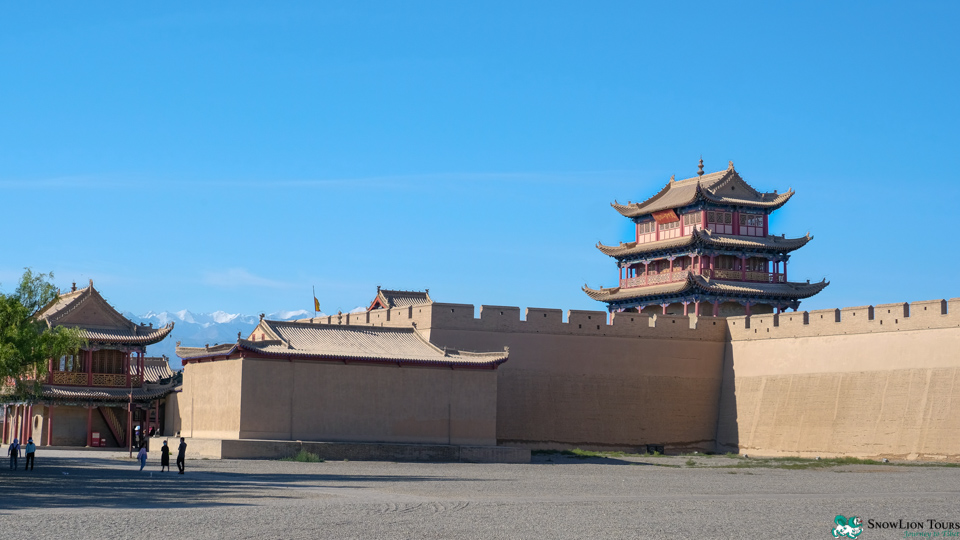
Jiayuguan Great Wall
Day 4. Jiayuguan – Dunhuang
Today we will drive about 400km which takes about 5 hours to get to Dunhuang. There are few Giant Arts on the road where you can stop. Once we arrive Dunhuang, we will visit Dunhuang Museum which is the largest museum on the silk road which features culture, history and landscape of silk road. In the evening, visit the Dunhuang night market which is a large 2 streets market and one section is for souvenirs and local goods and the other section is for restaurants and bars.

The duplicated paintings of Dunhuang Caves displayed inside the Dunhuang museum.
Day 5: Dunhuang Explore: Dunhuang Mogao Grottoes, Western Thousands Buddha Cave and Singing Sand Dunes.
Today, first we will drive to Dunhuang Tourists Center and then take a bus for 20 minutes to get to the caves. The Dunhuang Mogao Grottoes are constructed from 4th – 14th centuries. The treasure house contains hundreds of sandstone caves holding more than 2,000 statues and 45,000 brilliantly bright paintings of Buddha and Chinese and Tibetan mythological divines. The main caves which swarms of tourists contains the most impressive and well-preserved examples of ancient Buddhist cave arts and some of them are date back to 1000 years. Once complete explore these caves, you can get a cup of coffee and rest in the coffeeshop or purchase a small Dunhuang paintings as souvenir.
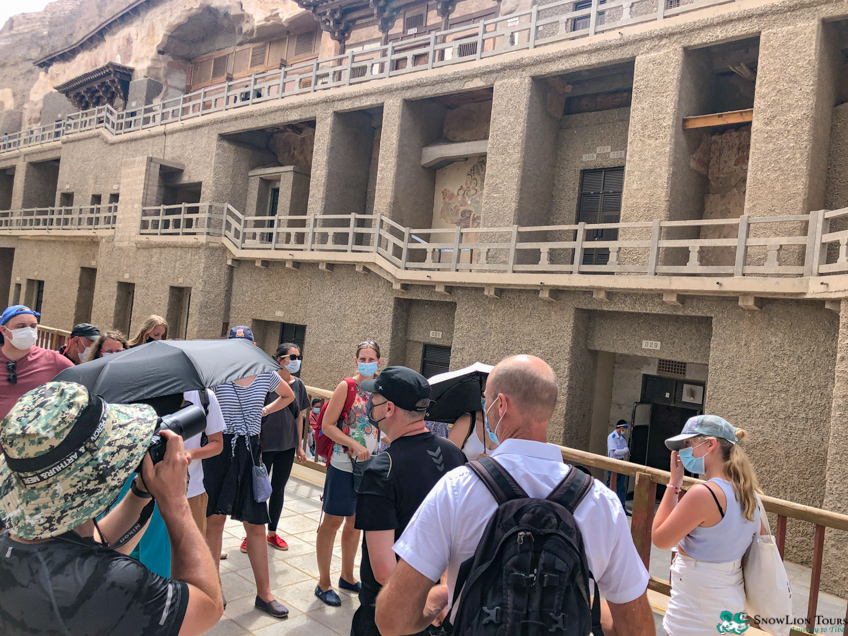
Our group is about to enter the Mogao Caves in Dunhuang.
After return back to tourist center, we drive to Western Thousand Buddha Caves. There are similar to Mogao Caves but smaller and much less tourists. After lunch we will visit the Crescent Moon Lake in the Singing Sand Dunes. From a distance make sure to keep your ears peeled for the whistling tunes among the sand dunes. The sounds are created by the winds cascading in a downward direction of the sand dunes at a low frequency mostly during dry and hot weather conditions.
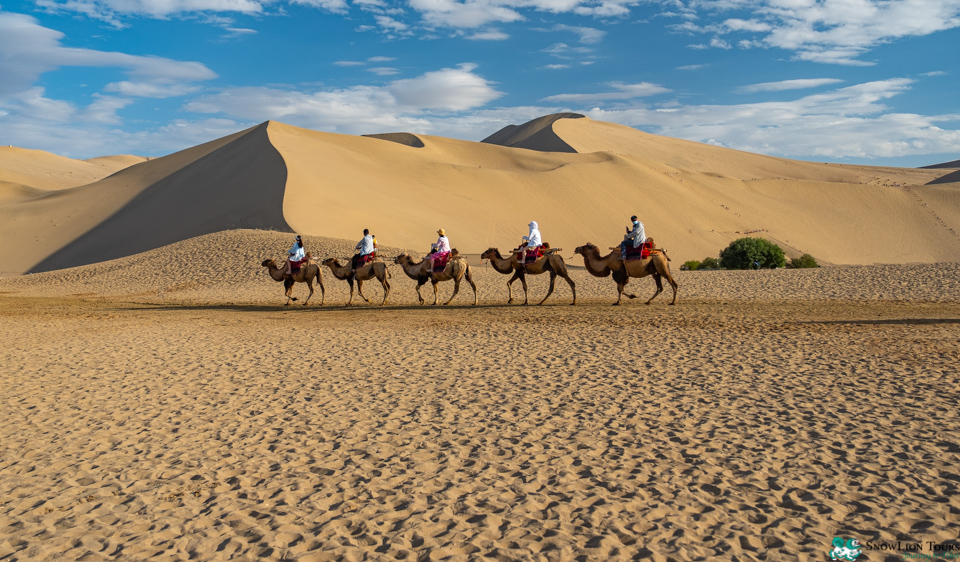
Dunhuang Singing Sand Dunes
If you are feeling adventurous, take up on an optional camel ride which will take you to one of the Sand dunes, you can walk to the peak for a panoramic view of Gobi desert or continue ride to the Crescent Moon Lake which takes about 50-60 minutes total. You can also climbing those Sand Dunes to enjoy a stunning sunset view on the top. Here you also have option to take helicopter and sand motorbikes.
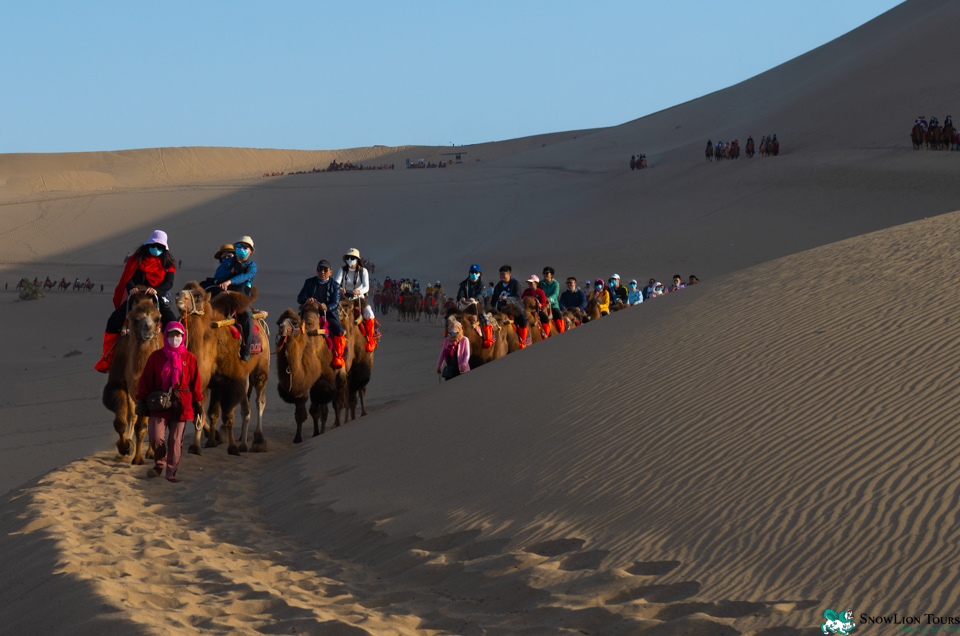
Riding a camel in Dunhuang
Day 6: Depart from Dunhuang
Say goodbye to your guide and driver




